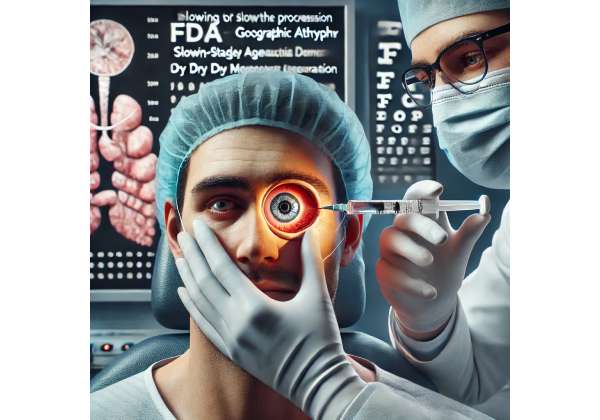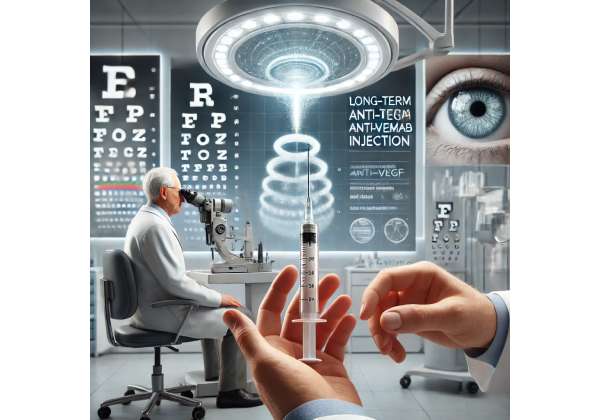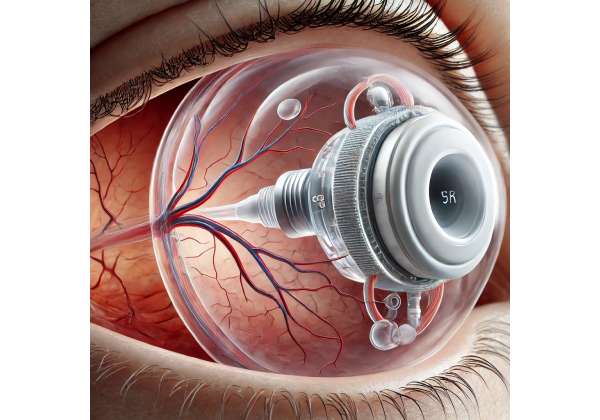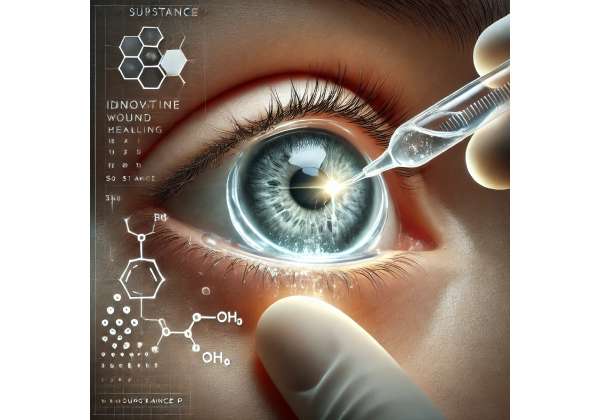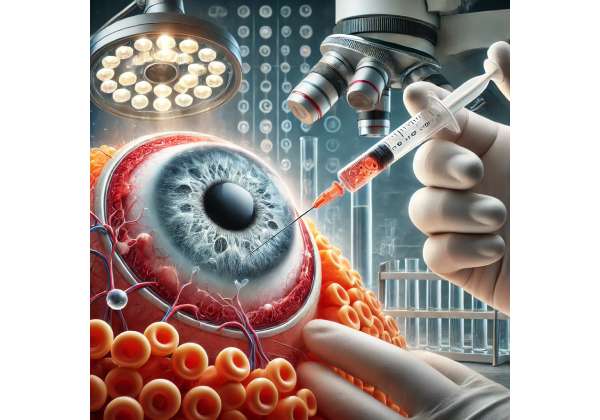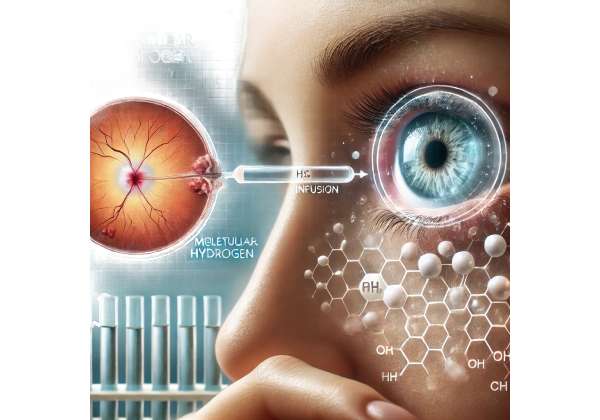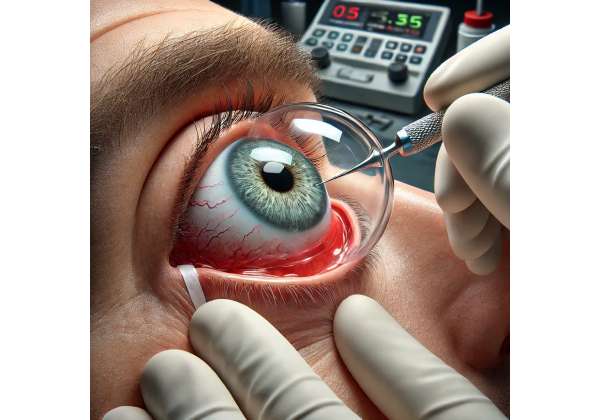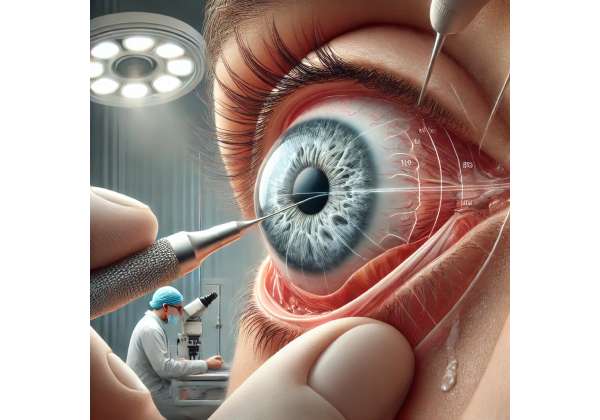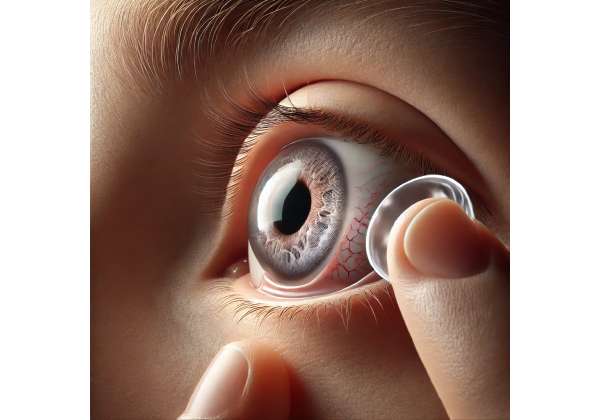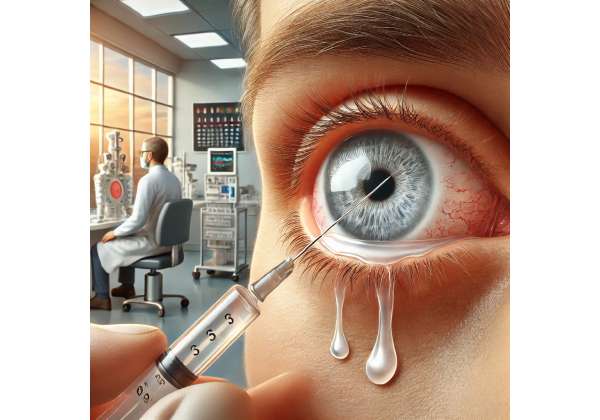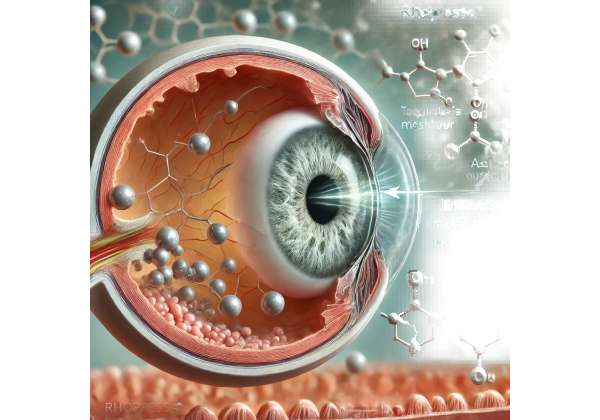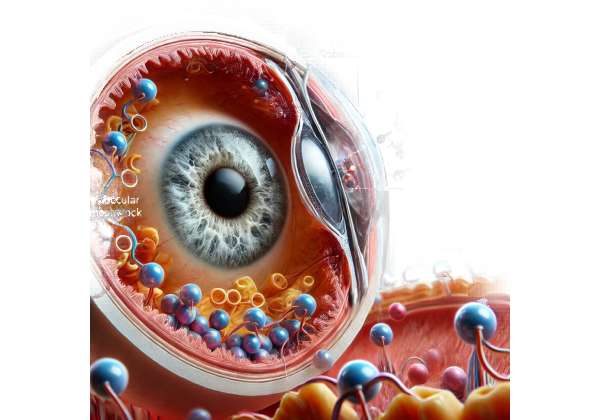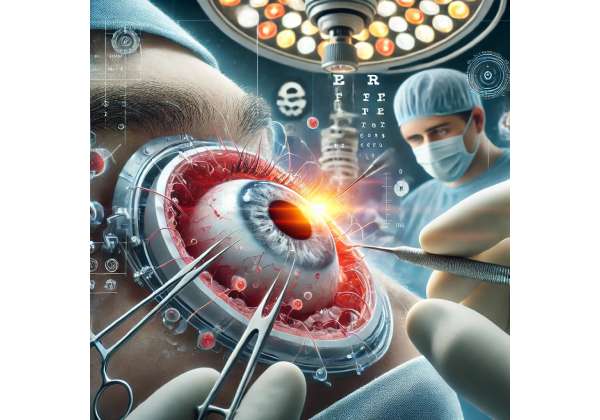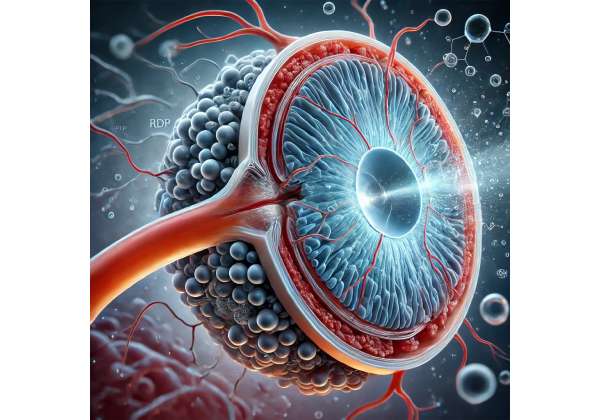Syfovre (Pegcetacoplan) FDA-Approved Solution Slowing Geographic Atrophy Progression in Late-Stage Dry Age-Related Macular Degeneration
Innovations in retinal therapies rarely arrive without great anticipation, and Syfovre (pegcetacoplan) is no exception. As the first FDA-approved treatment targeting geographic atrophy in late-stage dry age-related macular degeneration (AMD), this approach aims to slow the progression of a sight-threatening form of AMD for which effective interventions have long been scarce. By acting on a specific part of the...
Susvimo (Ranibizumab Injection) Revolutionizing Long-Term Anti-VEGF Therapy for Wet Age-Related Macular Degeneration
Long-standing reliance on frequent eye injections has prompted a search for more convenient and enduring anti-VEGF solutions. Susvimo, an advanced ranibizumab-based approach, is capturing attention for its potential to streamline care while delivering consistent therapy to those affected by neovascular or “wet” age-related macular degeneration (AMD). By introducing a refillable port delivery system, this treatment concept aims to keep...
Susvimo (Port Delivery System with Ranibizumab) A Game-Changer for Long-Term Diabetic Retinopathy and DME Treatment
The quest for better, more convenient therapies in the management of diabetic retinopathy and diabetic macular edema has entered an exciting new phase with the advent of Susvimo, an innovative implant for extended medication release. Designed to address the limitations of frequent eye injections, this approach strives to offer more consistent control over damaging blood vessel growth and fluid...
Supporting Retinal Health in Diabetic Retinopathy with Intraocular Oxygenation Devices
Innovative treatments continue to shape how medical teams approach diabetic retinopathy, aiming for more than just slowing the progression of disease-related complications. One promising option is intraocular oxygenation, a specialized method designed to enrich the eye’s internal environment with supplemental oxygen. Instead of exclusively relying on pharmaceutical interventions or laser procedures, intraocular oxygenation devices directly tackle a central issue...
Substance P An Innovative Breakthrough in Corneal Wound Healing and Dry Eye Relief
For many years, eye care professionals have relied on a limited range of treatments to manage corneal injuries and chronic dryness—chiefly artificial tears, lubricating ointments, and, in severe cases, corneal transplants or amniotic membrane therapy. However, as knowledge of ocular biochemistry expands, researchers have started pinpointing specific molecules in the body that can accelerate healing and support the natural...
Stem Cell-Derived Exosomes for Glaucoma Providing Neuroprotection in a New Form
Innovations in regenerative medicine continue to reshape how specialists approach and manage ocular health, and stem cell-derived exosomes are quickly becoming a focal point in this evolving landscape. While eye drops and surgical interventions have long dominated glaucoma care, the push toward biological treatments offers a glimpse into a more nuanced approach—one that emphasizes cell-to-cell communication and tissue rejuvenation....
Stem Cell Therapy Cutting-Edge Cell Replacement Therapy for Both Wet and Dry Age-Related Macular Degeneration
New breakthroughs in cellular science are transforming the landscape of vision care, and stem cell therapy stands out as one of the most promising solutions for a range of eye disorders. By introducing healthy, lab-grown cells to areas of tissue damage, scientists and clinicians are seeking to pioneer a technique that goes beyond halting disease progression—it aims to replenish...
ST266 for Optic Neuropathy Nasal Neurostimulation Therapy Supporting Nerve Recovery with Modern Technology
Innovation in regenerative medicine is changing the landscape of ocular health, and ST266 stands out as one of the promising developments specifically tailored for individuals managing optic neuropathy. While traditional therapies have aimed to halt or slow the progression of nerve damage, ST266 nasal neurostimulation therapy introduces a groundbreaking approach intended to promote nerve recovery and visual function. This...
ST266 for Dry Eye Disease Delivering Neuroprotective Proteins to the Eye with Innovative Nasal Spray
Eye therapies are evolving beyond conventional drops and ointments, with a growing emphasis on treatments that promote deeper, more sustainable relief. One such innovation is ST266, a solution containing neuroprotective proteins that can reach the eye via a nasal spray rather than direct ocular application. This approach offers a fresh angle on managing Dry Eye Disease—potentially helping patients who...
Speeding Corneal Healing with Molecular Hydrogen What You Need to Know
Innovation in ocular treatments continues to offer new possibilities for faster recovery and enhanced comfort. One emerging method is the use of molecular hydrogen, a naturally occurring gas that may speed up corneal healing. Rather than working as a broad-spectrum antioxidant, molecular hydrogen selectively targets the most harmful reactive oxygen species in the body, potentially reducing tissue damage and...
Smart Contact Lenses for Glaucoma How Nanotechnology is Revolutionizing Eye Care
Innovations in eye care often appear at the intersection of technology and medical science, and few advancements embody that quite like smart contact lenses for glaucoma. Rather than manually measuring eye pressure at a clinician’s office, these nanotechnology-powered lenses are designed to gather real-time data and deliver medication precisely when and where it is needed. By integrating sensors and...
Slowing Down Retinitis Pigmentosa The Power of Molecular Hydrogen Therapy
Harnessing the power of molecular hydrogen is an innovative way researchers and clinicians are now approaching complex vision challenges. Rather than relying solely on traditional therapies, scientists have begun exploring how hydrogen’s antioxidant potential might help preserve sight in individuals facing progressive conditions like Retinitis Pigmentosa. This approach taps into hydrogen’s unique ability to selectively neutralize harmful free radicals,...
Scleral Lens Fitting for Severe Dry Eye and Ocular Surface Disease Enhancing Eye Comfort
Advances in eye care have shifted the conversation from simply managing symptoms to actively improving comfort and stabilizing the ocular surface. One innovation that stands out is the use of scleral lenses. For individuals living with severe dry eye and ocular surface disease, these specialized lenses can make a noticeable difference in day-to-day quality of life. Rather than coping...
Scleral Cross-Linking A New Approach to Managing Progressive Myopia
Innovation in vision care has shifted dramatically toward treatments that address the root causes of refractive changes, rather than simply correcting them on the surface. Scleral Cross-Linking is one such breakthrough that aims to stabilize progressive myopia by reinforcing the eye’s outer layers. Instead of relying on eyewear or daily interventions that only refocus incoming light, this technique targets...
Scleral Contact Lenses for Keratoconus A Vision Improvement Solution
When it comes to cutting-edge solutions for complex eye conditions, few innovations are as exciting as scleral contact lenses. Instead of accepting the limitations of traditional lenses, people with challenging corneal shapes now have an option designed specifically to maximize comfort, clarity, and stability. These specialized lenses vault over irregular corneas, resting gently on the sclera (the white part...
Say Goodbye to Daily Drops Biannual Hydrogel Injections for Glaucoma
Imagine easing the burden of daily eye drops with just two treatments a year. That’s the promise of biannual hydrogel injections, an emerging therapy that aims to simplify glaucoma care and improve pressure control. Rather than relying on a string of alarms and schedules, patients could enjoy freedom from daily regimens—knowing that a specialized gel is continually working to...
Rocklatan Combining Netarsudil and Latanoprost for Advanced Glaucoma Treatment
Innovation has become the cornerstone of modern glaucoma management, offering new possibilities for those seeking to protect their vision. One such breakthrough is Rocklatan—a blend of netarsudil and latanoprost specifically crafted to improve how fluid drains from the eye. This dual formulation stands out because it targets multiple physiological pathways that regulate intraocular pressure (IOP), aiming for more substantial...
Rituximab in Autoimmune Uveitis Monoclonal Antibody Therapy and Vision Outcomes
Engaging in advanced treatments for autoimmune-related vision challenges has become a central goal for specialists worldwide. Among the most promising innovations in this area is the use of monoclonal antibody therapy, specifically Rituximab. This targeted therapy is acclaimed for its capacity to address underlying immune processes while preserving overall eye health. As clinicians and researchers continue to refine protocols...
Rigerimod (P140 Peptide) The Latest Therapy Revolutionizing Sjögren’s Syndrome and Autoimmune Eye Disease Treatment
Have you ever wished for a therapy that not only addresses uncomfortable eye symptoms but also tackles the underlying immune imbalance? Rigerimod, also known as P140 Peptide, could be the breakthrough many have been waiting for. Rather than treating each symptom in isolation, Rigerimod aims to recalibrate the immune response itself—particularly relevant in autoimmune eye conditions such as those...
Rhopressa’s Role in Glaucoma Treatment Increasing Aqueous Humor Outflow with New Therapy
Have you ever wondered if there’s a more direct way to tackle elevated eye pressure (IOP) by targeting the natural drainage pathways, rather than just slowing fluid production? Rhopressa provides exactly that opportunity. This once-daily eye drop is specifically formulated to increase aqueous humor outflow, which helps reduce the load on your optic nerve. Instead of taking a broad...
Rho Kinase Inhibition with Rhopressa A Modern Strategy for Ocular Hypertension
Are you looking for a fresh approach that could ease pressure inside your eyes and help protect long-term vision? Rhopressa, a cutting-edge eye drop targeting the Rho kinase pathway, aims to lower intraocular pressure (IOP) in a novel way. Rather than relying solely on more traditional medications like beta-blockers or prostaglandin analogs, Rhopressa uses its active ingredient to modify...
Revolutionizing Macular Degeneration Treatment How Hyperbaric Oxygen Therapy Offers New Hope
Picture a safe, noninvasive method that may enhance visual function by tapping into the power of oxygen. Hyperbaric Oxygen Therapy (HBOT) aims to do exactly that: provide an oxygen-rich environment that could bolster cellular health and potentially slow the progression of certain eye conditions. This unique approach places patients in a specialized chamber where they breathe 100% oxygen at...
Revolutionary Corneal Repair Using Umbilical Cord-Derived Stem Cells A Solution for Ocular Trauma
Have you ever imagined a treatment that can promote natural corneal healing by harnessing the body’s own regenerative abilities? Umbilical cord-derived stem cells are emerging as a powerful ally in restoring clarity to damaged corneas, offering hope for those recovering from ocular trauma. Rather than relying solely on conventional transplant methods or extended use of artificial ocular devices, this...
Retinal-Derived Peptide (RDP) A Revolutionary Therapy Advancing Treatment for Age-Related Macular Degeneration
Have you ever imagined a targeted therapy that can promote healthier cell function in the retina and potentially slow down vision decline? Retinal-Derived Peptide (RDP) is stepping into the spotlight as a transformative option, aimed at supporting the eye’s natural regenerative pathways. Rather than relying solely on existing medications that control symptoms, RDP strives to address fundamental mechanisms in...

